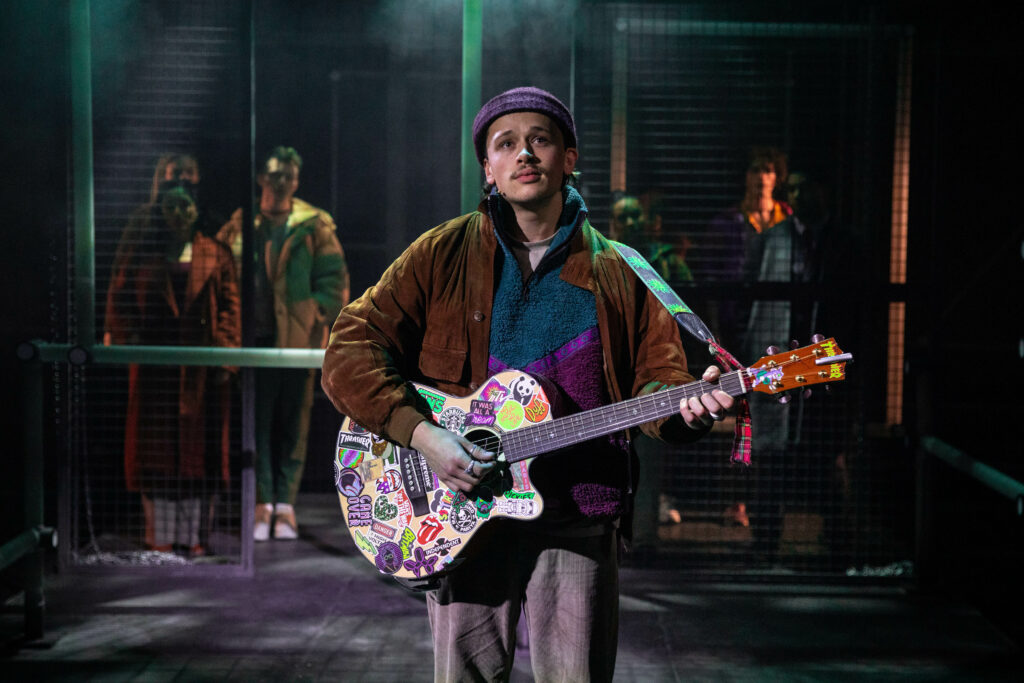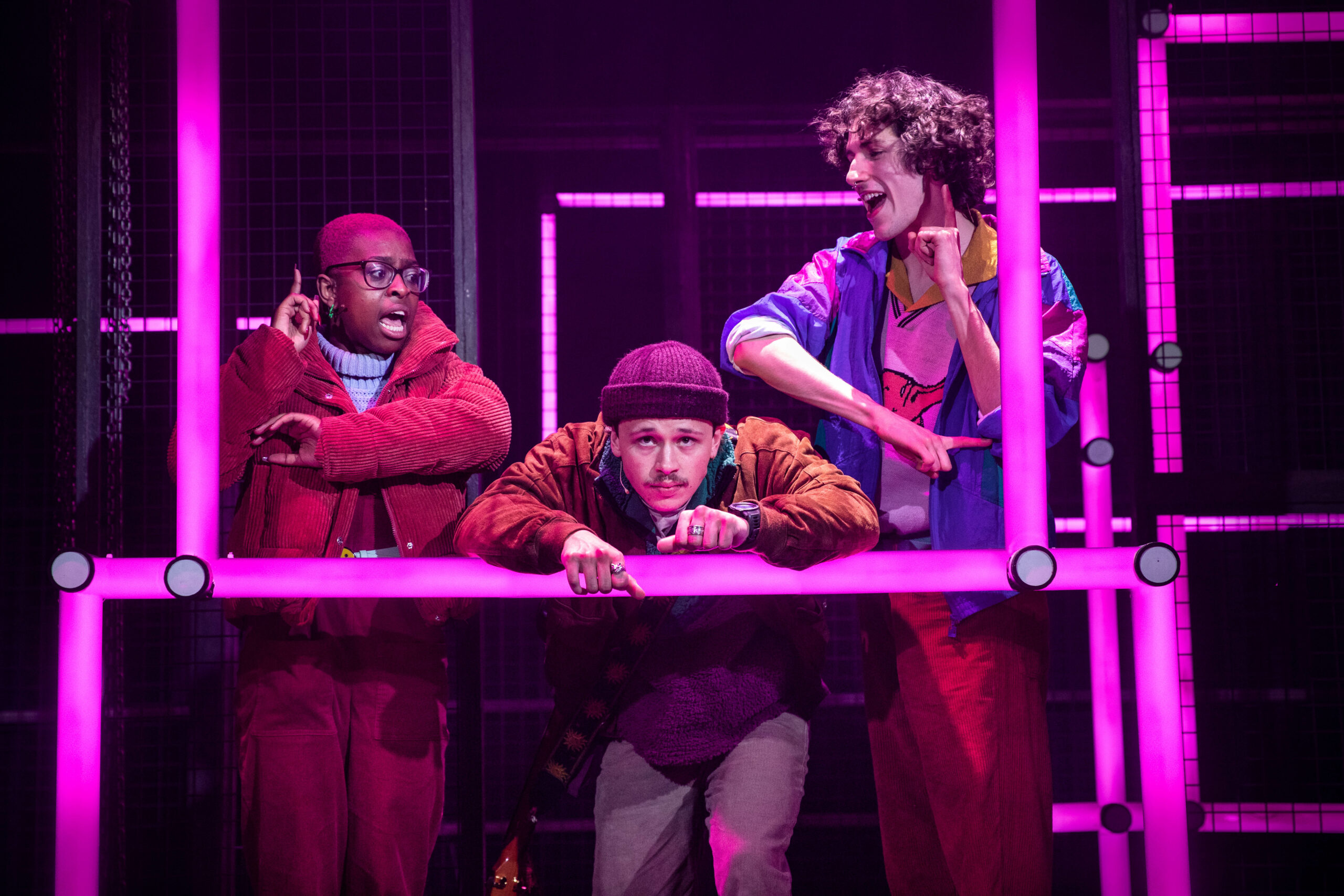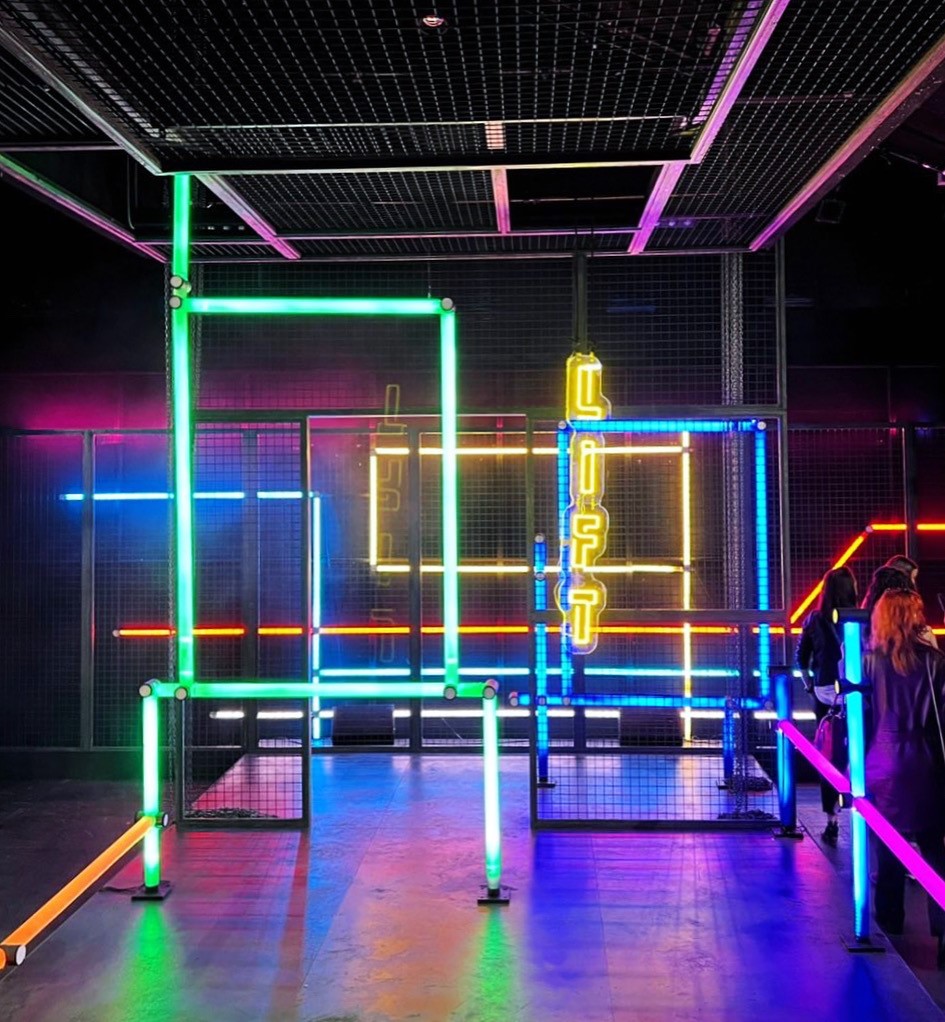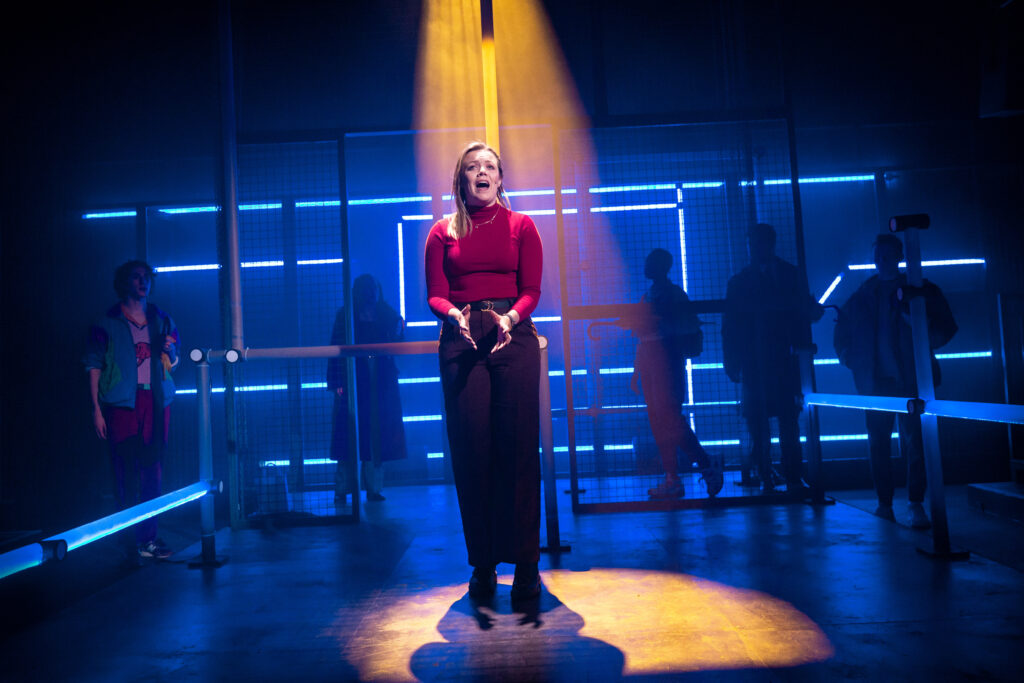The work commute. It’s something we’re all familiar with. Whether you’re jumping on a bus, a train or in fact in an Underground lift it’s part of the daily grind. Now, it might be something that we’ve been without for the last few years (or most of us anyway) but the experience of being packed in like sardines isn’t something you would forget in a hurry.
But, what happens when those people around you become more than strangers? What happens when you begin to fantasise and fabricate what their lives might be like? What challenges are they facing? What are their lives like outside of the metal walls and tiled corridors you find yourself crossing paths in?
LIFT takes you on a journey beyond these questions and beyond the tunnels of the London Underground, literally taking place in a lift during the morning commute.
Quite simply, this show is unmissable. A brand-new staging of the musical set in a scene so familiar to so many of us, LIFT‘s narrative takes place in just one minute – 54 seconds to be precise – and follows ordinary people and their not-so ordinary lives. It’s one of most eagerly anticipated shows of 2022, and here at Overstudies we weren’t disappointed.

I’d heard about LIFT some years ago – you can’t really avoid a musical set in the lift of a London Underground station when you’re a musical theatre nerd who works for the Underground! – but was never quite sure if I would get to see it. As regular readers (and Overstudies: On Air! listeners) will be aware, I try my hardest to avoid listening to soundtracks without having seen the show first. Much of the joy, for me, comes from going in ‘blind’; having the story unfold in front of you, getting to hear the music and lyrics for the first time and seeing events play out as intended by the writers and directors. I’m so pleased I managed to keep LIFT as a surprise.
– Charley
We’re no strangers to the Southwark Playhouse, this being our third show there this year. It’s a lovely little venue between Elephant & Castle and Borough stations, with two ‘black-box’ spaces available for shows. The larger of the two, the appropriately named ‘Large’, is home to LIFT until June 16. The versatility of ‘black-box’-style theatres cannot be overstated; we were in this same space just 10 days beforehand to see Anyone Can Whistle, and it’s unrecognisable to the uninitiated. I suppose that’s just as well – the last thing you’d find in London is a corrupt politician…
Incidentally, sharing the Large isn’t the only similarity LIFT has with Sondheim’s flop (but Southwark’s hit) Anyone Can Whistle – Jordan Broatch (they/them), fresh from playing eccentric Dr. Hapgood, appears in LIFT as an Avatar – but more on them, and the rest of this remarkable cast, still to follow. We just wanted to note the incredible talent and professionalism to be able to learn and rehearse two completely different shows and then perform them back-to-back – flawlessly, I should add – in the same venue. Performing is HARD – as ever, we salute every single person getting back on their feet and proving people wrong time and again. Theatre is back, and we couldn’t be happier.
LIFT’s biggest strength is its simplicity: it’s a place many of us are familiar with, and right from the off we can recognise and relate to the seemingly-ordinary characters who find themselves crowded into small metal boxes. This isn’t a narrative focused piece, but more a coming-together of character studies, all witnessed through the eyes of a London Underground busker (Luke Friend, he/him). It’s a love letter to London and a moment to pause and think about the everyday hustle and bustle of the Tube, and perhaps ponder the lives of the people we’re squeezed up next to.
Right from the off, the staging and direction of this production will feel familiar to any Londoner – from the generic backing track of a Tube station (recorded somewhere on the Piccadilly line, no less… yes, there’s giveaways) to the clever use of flies to move part of the set up and down, all in front of a bright neon Tube map-esque backdrop. It adds to the concept without distracting from the cast, helped along with further references to things like free newspapers, Tube stations and lines and – of course – the very idea of travelling on the Tube itself. Indeed, this neon map will no doubt remain one of the most memorable aspects of the production, being both versatile to frame and highlight key moments of the production but also providing a functional and practical part of the set and helping to ‘create’ the lift itself (although we did notice a slight malfunction on press night).

Annie Southall’s choreography is another stand-out moment – perhaps most effectively for the Avatars (Jordan Broatch and Chrissie Bhima, she/her), a human-manifestation of our online personas – or, as suggested by the show, the so-called ‘Metaverse’. Both Broatch and Bhima’s movements were flawless, with a hybrid human-machine feel to their characters. They add an almost-dystopian feel to elements of the show, whilst also remaining completely relatable and relevant to the modern world.
Whilst at times the book can be a little complex to follow, with all the characters being called Sarah, Gabrielle or Kate, their unique personalities shine through, and we get a glimpse into the lives of the French teacher (Kayleigh McKnight, she/her), Secretary (Hiba Elchike, she/her), BYT (Marco Titus, he/him), Ballet Dancer (Cameron Collins, he/him) and Lap Dancer (Tamara Morgan, she/her) and how they interact together. The audience is left to decide for themselves how much of this may be true or simply imagined (or projected) by the Busker, but some of the themes in the costuming and relationships certainly lead us to believe that there may really be some links between these random strangers.

One of the stand-out aspects of this piece is the way the book, the costume choices and the staging are intentionally vague. What one person takes away from the show is likely to be different from the person they are sat next to, in the same way we’d imagine the lives of those we see on the tube in completely different ways. Even between ourselves at the Overstudies we’ve picked up on different aspects of the show and interpreted them to varying degrees of importance.
The colour selection within the piece is one of these stand out instances. While it may go unnoticed by those less familiar with the Tube map, the characters are all intentionally dressed in the colours of the Tube lines. The characters who interact the most share colours in their costumes. Not only do their daily commutes cross, their lives in the mind of the Busker cross. Could these characters represent the interchanging of stations and lines on the London Underground, the busy criss-crossing of people and train tracks, or is this simply a nod to the colours on the map? That’s the beauty of this piece – every person can and will see this differently.
McKnight’s French teacher takes the nod for the most memorable performance of the production – Lost In Translations. Whilst we didn’t expect anything less here at Overstudies, being big fans of anything Kayleigh touches, it was nonetheless a truly magical and moving moment of heartbreak and being scared of what the future might hold – the suggestion that in a city that never stops, it can be hard to always communicate and work out the things we have in common.

Another beautiful set-piece comes towards the end of the ‘54 seconds’, with Friend and Elchike being joined by the rest of the cast on stage for Top of the City. Handheld blue neon batons, similar in style to those forming the backdrop, are used to become and to symbolise the city around the two characters; they create barriers but they flow and move. There’s the realisation that strangers are reflections, not diversions, and that sometimes stopping and taking a moment to pause can be effective to everyone. There’s strong thematic links to shows like Ordinary Days, where we never quite know what might happen from the most ordinary of encounters.
LIFT won’t be to everyone’s liking – there’s no get-on-your-feet numbers or character development so-to-speak – but as a standalone set piece, particularly with this company, it is British theatre at its very best – make sure you enter the LIFT whilst you can.
LIFT is currently playing at the Southwark Playhouse until 18th June 2022. Tickets are on sale now. The show runs for 90 minutes with no interval.
Charley saw the show during previews on 16th May, Bekki saw the show on Press Night on 18th May. Press Night was a PR invite.


